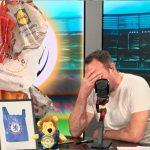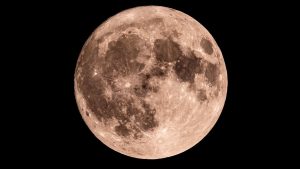
How Erede Is Building a Jewelry Brand for Tomorrow
Gabriella Khalil, the creative director of ventures such as hotel Palm Heights in Grand Cayman and Manhattan’s creative work hub WSA, has found inspiration in designs by jewelry brand Erede. “They work a lot with form, texture and a lot of linear lines,” she explains of Erede’s aesthetic appeal.
It was fitting, then, that Khalil came to connect — and collaborate — with founders Talia Shuvalov and Jeramie Hotz on the brand’s latest collection, after meeting over a year ago. The women got talking about their familiarity with one another’s work, and discussions evolved into plans to collaborate on jewelry pieces under the Erede label. It was Khalil’s first time designing jewelry, and her first time collaborating on a product range under her own name.
With Khalil, Shuvalov and Hotz knew it was a good match when they cross-checked their mood boards. “There was a lot of overlap. Not so many images, but they were all in the same world,” Khalil says. Commonalities included vintage furniture, interiors, and both Khalil and the Erede team included Art Deco teapots.
Erede’s unusual approach to collaborations — tapping Khalil, known for her work in interiors — is just one way the founders are looking to build a next-generation jewelry brand. Coming from outside the industry, the founders are flipping the script on what “future heirlooms”, as the brand calls them, can look like and be: vintage-inspired and built with modern technology; a solid investment without breaking the bank, like a natural diamond cut would.
While the brand does sell some natural diamonds, its goal is to offer a fresh, modern take on lab-grown jewelry that fuses with a traditional aesthetic. “We were really focused on developing vintage cuts on lab-grown raw material, which is not something that was really in the market — and is still not widely done,” Shuvalov says, adding that about 95% of the brand’s customers shop lab grown. Erede customizes the stone for the design, rather than the other way around — a perk of using lab grown, she adds.
Photo: Fujio Emura
Photo: Fujio Emura
Erede’s pieces run from $1,050 for a stud and $1,600 ring to $16,500 for a hinged diamond collar, with its most recognizable pieces being diamond signet rings, with various cuts of stones embedded in corrugated gold. Khalil’s 12-piece collaboration provided the opportunity to try something different, including mixed-metal stackable rings and angular, diamond-adorned neck collars.
The collection spans a lower price point than Erede has offered previously, starting at $550, and bringing in silver and gold vermeil for the first time, as well as an onyx color. For Erede, this was partially born of a desire to experiment with more materials, as well as a response to the brand’s Australian consumer, which makes up about half of its base (Aus and the US are Erede’s two largest markets). Given the Australian dollar is weaker, though Erede’s prices are competitive in relation to fellow US brands, it’s a tougher sell among local options, Shuvalov says. “We’ve built a brand there [in Australia], we have a lot of people who support us there and we felt like this collaboration, targeted to the Australian market, could do better in a more accessible price range.”
For Khalil, it means more of her followers and community will be able to buy in. “Obviously, fine jewelry is fine jewelry, but I thought it would be really nice to have some pieces to make it a bit more broad. There are different things, depending on what someone’s looking for,” she says.
Crossing worldsLike Khalil, Shuvalov and Hotz weren’t jewelry natives, either. After growing up together in Sydney, Shuvalov moved to New York to pursue a career in fashion. She worked her way up in-house at brands including Alexander Wang and Narciso Rodriguez, and is currently co-creative director of Ossou. Hotz worked in industrial design and production in Australia. Prior to founding Erede in 2023, the pair took to curating and selling vintage jewelry on the side. This evolved into the seeds of the brand, with a view of creating collectible fine jewelry at a lower price point than was typical of buying firsthand.
Coming from the realms of fashion and design, Shuvalov and Hotz don’t have much of a jewelry network, the former says. “We’re much more in the fashion sphere,” Shuvalov notes, adding that many of the brand’s early clients came from the fashion world.
Founders Jeramie Hotz and Talia Shuvalov.
Photo: Courtesy of Erede
It’s with this cross-industry approach that the pair are building Erede, considering how to bring their products into different creative spheres. Khalil isn’t the first tastemaker Erede has worked with. In April, the brand dropped a two-piece collaboration with creative director and consultant Juliana Salazar, consisting of a heart-shaped ring and earrings.
By working with creative directors who know what makes shoppers tick, Erede not only gains access to these individuals’ communities, but also to their brand-building expertise. “I like to create spaces, but this is looking at it from a product angle where it’s actually pieces that someone can take home with them,” Khalil says. “If you love the way it feels or looks, it’s something that you can have, which is really special and different to how I design projects.” This, she says, is the key to selling in today’s retail environment. “Everyone really is looking for some type of experience: how are you connecting with something? Whether it’s a restaurant or a piece of jewelry, it’s still a connection and [about] how it makes you feel,” adds Khalil.
Local and globalTo date, much of Erede’s brand presence has been concentrated in the founders’ own cities, New York and Sydney. The pair are slowly considering how to branch out beyond these locales — but aren’t in a hurry to turn into a global powerhouse.
For 2026, the brand has plans to show up in the UK (they’re already stocked in Harvey Nichols, one of their eight stockists including US-based jewelry platform Finematter and independent jewelry retailer Trove, located in the West Village), and are mulling a Paris pop-up. But the main focus remains on the US, Shuvalov says. “There’s so much that needs to be done outside of New York and LA, and Dallas and Charleston,” she says, with a nod to the cities where Erede has already shown up via trunk shows. Next year, she wants to return to the latter three, with Miami and other Californian cities also on the cards.
Photo: Fujio Emura
Shuvalov likes to be there in-person for the trunk shows. “With clothing, you can do a trunk show and you can send the team, they can sell it,” she says. “With jewelry, there’s so much storytelling around a design and around the stones that it’s very hard to not be there,” Shuvalov says, adding that the lab-grown element creates even more of a need for IRL discussion.
They’ll take the same approach for the latest collection with Khalil. “We’re thinking with Gabby to do some things at the beginning of next year,” she says. Shuvalov’s not closing the door on more collaborative pieces, either — with Khalil or other tastemakers.
“We just love working with other creatives and it is so beneficial on both sides,” she continues. “We’re going to launch our own collection [at the] beginning or middle of next year, but then we might do another [collab].” It all depends on who the founders meet, when they meet them and if it clicks, she says. “I know it sounds not strategic, [but] it actually is because we follow our guts so much and our guts always tend to lead us in the right place,” she says. “It needs to be the right thing and it needs to be the right time. And if that works out, we definitely will continue down that path. I think it’s highly beneficial. It’s about expanding both of our worlds.”
More from this author:
LuxExperience Is Offloading The Outnet
Are Sample Sales Good for Brands?
Where China Tariffs Stand Now












Walaa